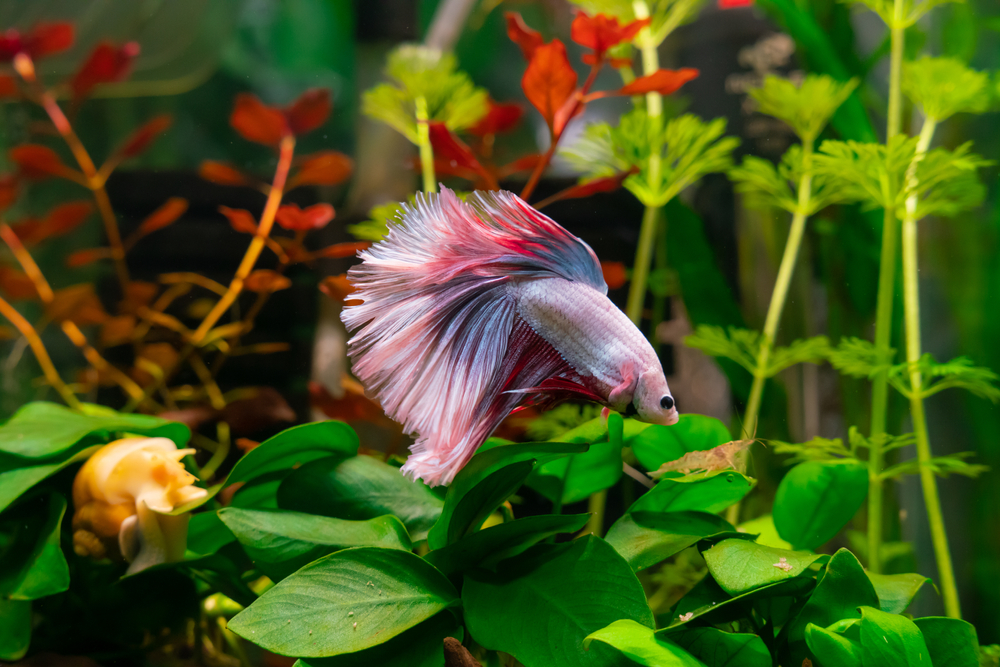Have you ever been captivated by your betta fish’s sudden mid-air appearance? These acrobatics are a testament to their natural instincts, leaving you in awe of their little brains! Bettas, with their vibrant colors and flowing fins, are a sight to behold, but their innate jumping skills truly set them apart.
While it’s natural to feel concerned when your fishy friend ventures outside their watery home, there’s no need to panic because betta fish jump as part of their natural behavior.
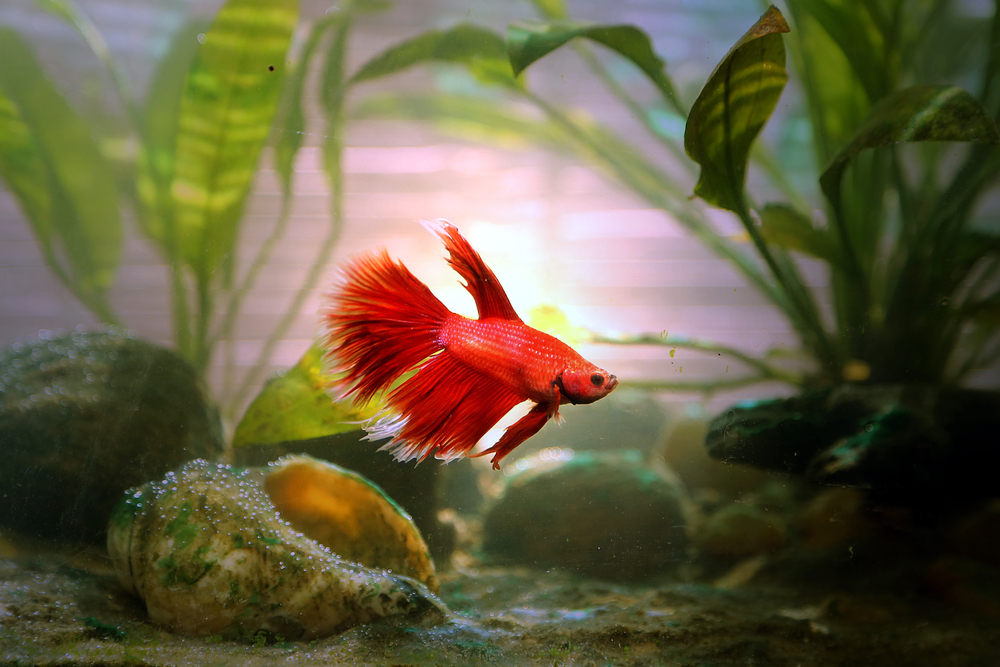
This post serves as a guide to understanding your betta’s jumping habits. By investigating the factors leading to their aerial adventures, from their wild instincts to their reactions to their surroundings, you’ll gain a deeper understanding of your pet. This knowledge will help you spot signs of stress or unhappiness and take action to create a stress-free paradise in your tank.
We’ll also cover everything from maintaining tip-top water quality to creating a stimulating underwater space with hiding spots and fun things to enjoy. In the end, you’ll have everything needed to decipher your betta’s movement and create a safe environment that may reduce risky behavior. Let’s get started!
Contents
Understanding Betta Fish Jumping Behavior
Betta fish are known for their jumping behavior, which can be due to various reasons. While it’s impressive to see them jump up high, it’s essential to take safety majors to prevent any accidental jumps that could harm them. Let’s discuss why betta fish jumps the way they do:
Understand more on Betta fish from these other top posts:
The Reasons Betta Fish Jump
Let’s go through some reasons behind betta’s fascinating jumping behavior.
- Natural Instinct: Betta fish have an instinct to jump that stems from needing to move between small bodies of water in their wild habitats.
- Poor Water Quality: High ammonia levels distress bettas, prompting them to jump and seek cleaner water.
- Lack of Space: Small or cluttered tanks make betta fish feel confined, leading them to jump behavior.
- Lack of Hiding Places: The absence of hiding spots can make betta fish feel vulnerable and anxious, causing them to exhibit stress-related behaviors, such as darting and jumping, in search of a safe and secure location.
- Hunting Instincts: Betta fish are natural jumpers and may instinctively jump in pursuit of insects.
- Feeding Response: Betta fish may jump in response to feeding time, mistaking it for insects on the surface.
The Role of the Labyrinth Organ
The labyrinth organ, a unique adaptation among fish, allows bettas to breathe atmospheric air. This organ is located in their gills and is used when dissolved oxygen levels in the water are low.
When this happens, bettas are more likely to utilize this organ, which may lead to more frequent jumping. Proper tank aeration can satisfy their oxygen needs and reduce the reliance on their labyrinth organ for oxygen, thereby reducing their jumping behavior.
Creating a Safe and Stimulating Environment
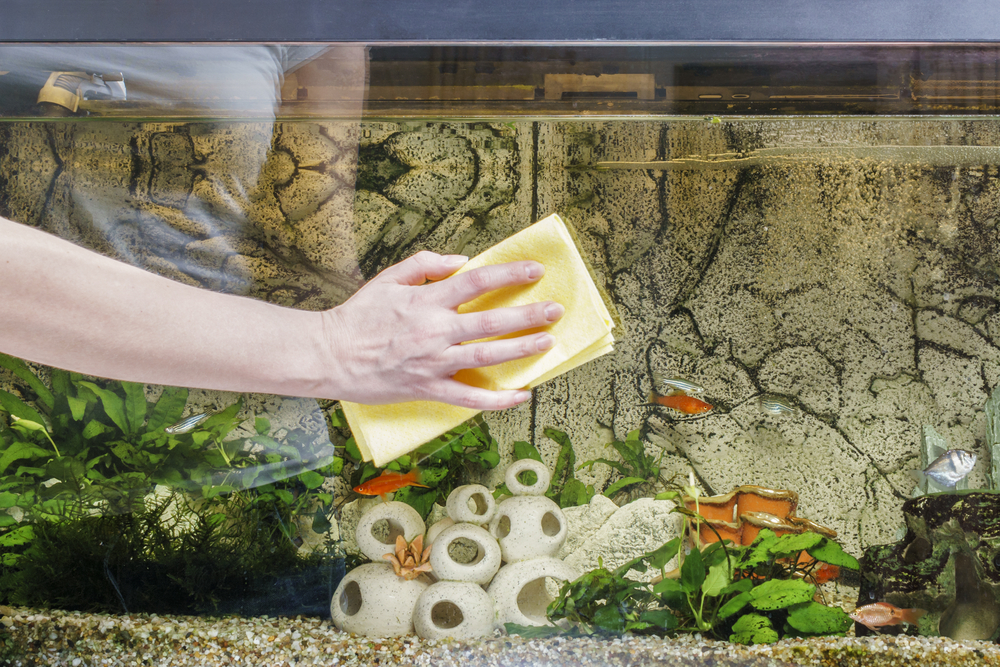
Betta fish love a good jump, but they also love a comfy home. Let’s see how you can set up a good, safe, and exciting tank, keeping your fishy friend happy and giving them less reason to leap out.
Proper Tank Conditions and Maintenance
Keeping your betta fish happy starts with their tank. To make sure your betta is swimming happily in their tank, focus on the following tips:
- Tank Size: When it comes to your betta’s tank, size matters. A minimum of 5 gallons per betta is not just a suggestion; it’s a necessity. This ample swimming space is crucial for their well-being and helps maintain stable water quality.
- Equipment maintenance: Regularly check and maintain your equipment, such as filters, heaters, and lights. Make sure they are functioning properly and replace any worn-out parts as needed.
- Water Quality: Maintain stable water chemistry, as poor water conditions can stress bettas and prompt them to jump. You want to maintain a water temperature of 75-80°F and a pH rating of 6 to 7.
- Water Changes: Regular water changes, at least once a week, are important. You should consistently test the water using a reliable kit and keep the ammonia, nitrites, and nitrates safe to discourage jumping.
- Aquarium Salt: Sometimes, aquarium salt in small, specific doses can help prevent diseases. For accuracy, follow a trusted betta fish care guide.
- Quarantine: Quarantine new fish before introducing them to your aquarium to prevent the spread of diseases.
- Visual checks: Perform daily visual checks to ensure everything runs smoothly and promptly address any issues.
Tank Accessories and Enrichment
When keeping your betta happy and healthy, the right tank accessories and enrichment items can make a big difference. These little things can transform a basic tank into a thriving, engaging environment for your fish companion. Let’s take a look at them:
- Hiding Spots: To provide mental stimulation, make sure you include caves and hiding spots, encouraging your betta to explore.
- Live and Floating Plants: Enrich betta fish habitat with live plants and floating plants, which are beneficial for water filtering and provide natural hiding spaces.
- Exercise and Stimulation: Betta exercise mirrors allow your betta to display natural territorial behaviors by flaring its fins at its reflection. Also, live foods like brine shrimp, daphnia, and blackworms encourage your betta’s natural hunting instincts.
- Lights and Tank Mates: A stable aquarium light cycle mimics natural day and night, promoting a healthy sleep rhythm. If considering tank mates, choose peaceful and compatible ones to avoid stress and territorial fights.
Preventing Escape and Injury
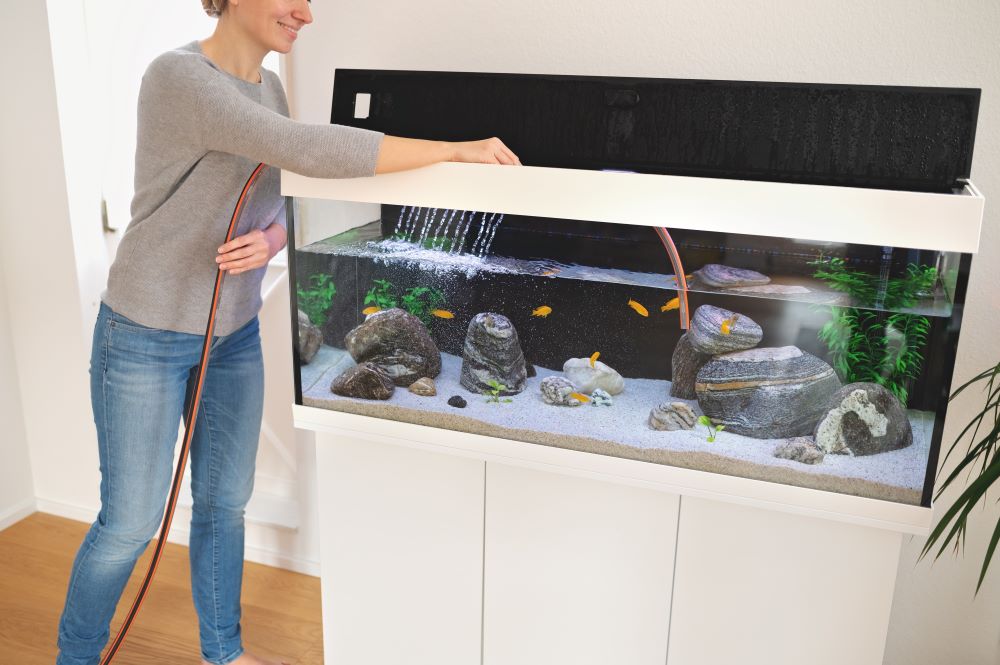
It’s important to secure the well-being of your betta fish by preventing their escape. Let’s take a look at the suitable ways to prevent your betta from escaping and getting injured:
Creating a Stress-Free Betta Habitat
Creating a calm, enriching environment for your betta is key. Make sure they have plenty of hiding spots, live plants, and other stimulating elements to swim around. Avoid overfeeding, loud noises, or other stressors that could trigger jumping behavior.
A relaxed, comfortable betta is much less likely to try and make a leap for it. These simple precautions can help keep your aquatic friend safe and secure in their underwater home. There could be no more worrying about unexpected betta acrobatics! Just sit back and enjoy watching them thrive.
Securing the Aquarium with Appropriate Covers
Installing a suitable tank lid or aquarium cover is your first defense against your betta fish jumping out and getting injured. Your vigilance and attention to detail can effectively prevent escapes, ensuring the safety of your beloved betta.
Recognizing the Need for a Larger or Better-Designed Tank
Sometimes a betta fish needs more space or a different tank design to feel comfortable and prevent jumping. If I find my fish is frequently trying to escape, I consider upgrading to a larger tank.
A bigger environment can reduce stress caused by confinement or lack of space. The new tank should also have appropriate height and hiding spots, contributing to my betta’s sense of security.
Conclusion
So, that’s a wrap! Betta fish jumps may look scary, but understanding them is the key to keeping your finned aquarium friend happy and healthy. Remember, jumping is natural for bettas but can signify something fishy in their tank.
The good news is you can prevent most jumps by creating a betta paradise. Making sure their tank is clean and spacious, with fresh water, hiding spots, and yummy food.
If you see your betta acting stressed or trying to escape, don’t worry! This guide gave you some fantastic tips to turn things around. From checking the water quality to adding some tank mates, there are plenty of options to create a stress-free home for your betta fish. So relax, enjoy those beautiful colors, and watch your betta happily without many high jumps.
Frequently Asked Questions
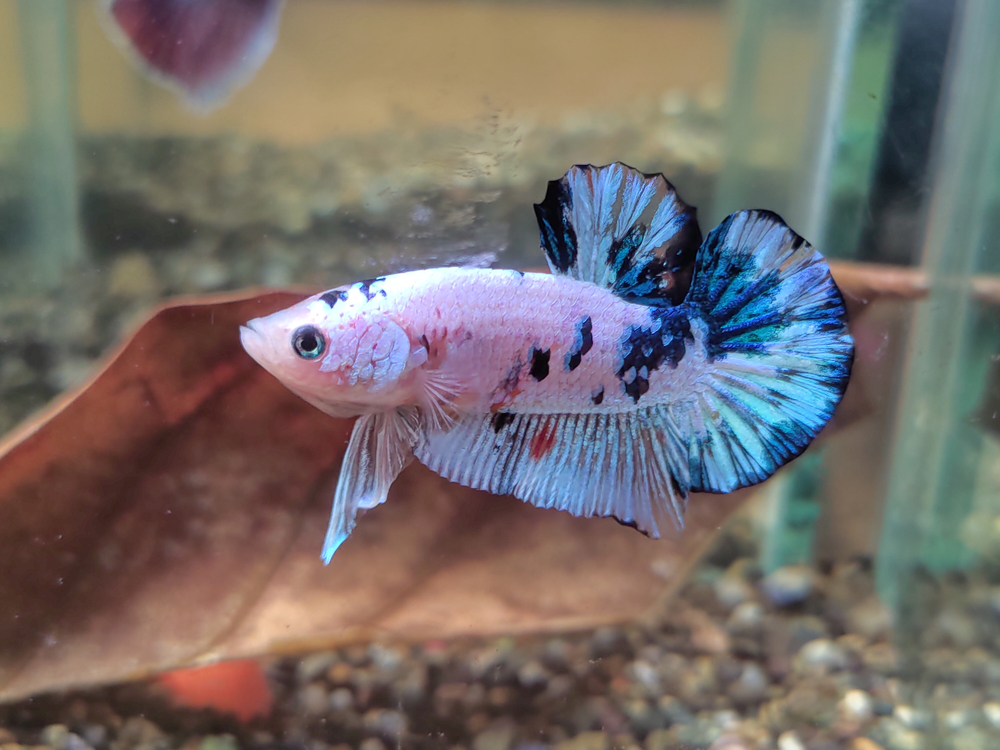
Have you ever wondered why your betta fish seems like a tiny acrobat? You’re not alone! Lots of betta owners wonder why their fish like to jump. Here, we’ll answer all your burning questions about betta jumps.
Is jumping normal for bettas?
Yes, it is normal for betta fish to jump! Betta fish are natural jumpers known to leap out of their tanks. This behavior can be due to various reasons, such as stress, excitement, or trying to escape.
How high do bettas jump?
Betta fish can jump up to 3 inches high, which is impressive for their size. However, jumping out of the tank can be dangerous for your betta fish. That’s why you always want a tight-fitting lid on the tank to prevent accidental jumps.
What could cause my betta to jump out of its tank?
There can be various reasons why your betta fish might jump out of their tank, including poor water quality, curiosity, stress, or insufficient space. Discovering escape prevention methods for jumping betta fish is vital for their safety.
How can I prevent my betta from jumping out its tank?
To prevent your betta fish from jumping out, ensure the aquarium is well-covered with space for air exchange. Keeping the water parameters optimal and providing an enriching environment can minimize jumping behavior.
Can a betta survive after jumping out of its tank?
A betta fish can survive outside the tank if found quickly and gently returned to the water. Its labyrinth organ allows it to breathe atmospheric air temporarily.

Ian Sterling, founder of Fishlab.com, began his aquarium journey over 30 years ago, driven by a deep fascination for fish and their diverse personalities. His website, Fishlab.com, is dedicated to making fishkeeping accessible and enjoyable, offering beginner-friendly guidance, expert insights, and a community for aquarists to connect and share experiences.


